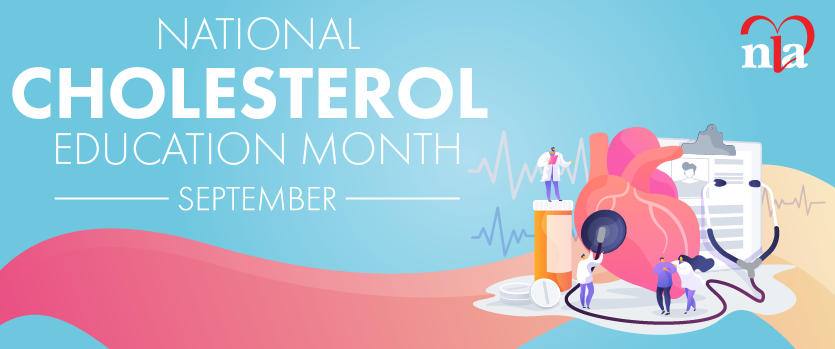The evaluation and management of dyslipidemia has advanced in recent years. Dyslipidemia is one of the major contributors of atherosclerotic cardiovascular disease (ASCVD). According to the Centers for Disease Control and Prevention statistics, about 33.5% of adult Americans have elevated low-density lipoprotein cholesterol (LDL-C). 1 These patients commonly are diagnosed and treated by their primary care provider and less than one-half of those patients receive drug therapy.1 In today’s busy primary care practices, there are multiple challenges to the management of the patient’s adherence to therapy. Allied health care professionals, including pharmacists, can aid in this endeavor in a team-based care environment.
There are numerous reports in the literature of pharmacists’ provision of disease-state management services to patients with elevated blood cholesterol.2-10 However, there are none that describe comprehensive medication management (CMM) services applying the 2013 American College of Cardiology and American Heart Association (ACC/AHA) guideline in a federally qualified health center (FQHC).
We evaluated whether pharmacists in a cardiovascular risk clinic (CRC) under the supervision of a clinical lipidologist could not only improve patient care for those who are at risk for ASCVD but also provide patient-centered care.
Peak Vista Community Health Centers is a nonprofit FQHC dedicated to providing premier medical, dental and behavioral health care in a collaborative setting for people of all ages. It serves more than 83,900 patients through 26 outpatient centers in Colorado’s Pikes Peak and East Central regions. Like many other community health centers, significant portions of these patients are racial or ethnic minorities from disadvantaged backgrounds. There are numerous challenges in providing and sustaining evidence-based standard medical care within this population.
The pharmacist-managed CRC was established in March 2015 in one of those 26 centers and began to recruit patients through an internal referral process that was set up with all the Peak Vista providers. The CRC used a treatment algorithm to start patients who qualified for statin therapy on the appropriate dose and intensity. These algorithms were adopted as per ACC/AHA cholesterol treatment guidelines under the supervision of a clinical lipidologist who also is a medical director for CRC. Per the ACC/AHA guidelines, emphasis was placed on therapeutic lifestyle changes (TLC) (i.e., a heart-healthy diet, regular exercise, avoidance of tobacco and maintaining a healthy weight) as a critical component of ASCVD risk reduction.
During the initial encounter, pharmacists established rapport with the patient, assessed the patient’s current knowledge of cholesterol management, went over the importance of TLC and how to implement it, and reviewed the patient’s ASCVD risk and options for treatment. When statin therapy was indicated, the pharmacist reviewed drug benefits and potential side effects, when to seek medical attention and when to obtain follow-up lab testing. During subsequent encounters, lab test results were reviewed, the importance of TLC and the patient’s progress was reinforced, medication adherence was reviewed, reminders of potential side effects to self-monitor were discussed, any changes made in medication therapy were explained and follow-up care was determined.
After the first year of the CRC, 177 patients had been seen by pharmacists. Of these, 50 had completed their time in the CRC and had returned to their primary care provider for their cholesterol management and 127 remained active patients. There were 405 patient encounters. Patients typically were seen every 6 to 12 weeks, depending on need. Laboratory tests were ordered and reviewed in accordance with the protocol.
Payer mix included: Medicaid (49%), Medicare (23%), Medicaid and Medicare (14%), uninsured (11%) and commercial insurance (3%). Billing for services generated some revenue but not a sufficient amount to offset the cost of operating the CRC. The cost of operating this clinic for the first year was funded via a grant from the Community Health Partnership (CHP), a network of local health care organizations and community organizations in El Paso and Teller counties that work together to improve health care for the local community.
Sixty-nine of the 170 (40.6%) CRC patients to which the 2013 guidelines could be applied received a higher-intensity statin drug/dose than they had been taking prior to the referral (Table 1). Seven patients did not fit into one of these four statin-benefit groups. One patient with LDL-C >/= 190mg/dl while on a high-intensity statin dose was started on evolocumab by her primary care provider. The remaining patients already were on the appropriate dose of statin and TLC was reinforced.
Patient-satisfaction surveys were given to CRC patients if they had been seen at least twice or at the completion of their time in the clinic. They were asked to complete the survey anonymously; a total of 22 patients completed the survey. Also, the survey was distributed to the provider to assess providers’ perceptions of the CRC and to gather providers’ insight into their experience and possible challenges with the CRC.
The goal of this project was to assist Peak Vista providers in implementing the 2013 ACC/AHA Treatment of Blood Cholesterol Guidelines through a pharmacy-managed lipid clinic. The goal was to see 500 patients in the first year of the clinic. With continued efforts, the number of patient referrals to the clinic increased throughout the year. However, there were significant challenges in the beginning. The most significant was changing providers’ habits in how they manage their patients with elevated blood cholesterol and, hence, the initial low rate of referral to the CRC.
The number of patients completing the survey was low, because initial emphasis was on the patients who completed their time at the CRC. Based on those patients who completed the survey, most of them (95.5%) were satisfied with the CRC services provided by the pharmacist. Approximately 91% of patients agreed that they were given enough information to make a choice between treatment options. Those patients also felt the information provided by the pharmacist and talking with the pharmacist about treatment options helped them to decide which options were best for them. Most respondents (95%) felt comfortable asking questions and voicing their concerns. They also were confident that they chose the right treatment options for themselves and confident that they would be able to continue their treatment plan.
Providers shared the patients’ view that the CRC was patient-centric. They also believed the CRC service was a valuable addition to treatment of their patients with dyslipidemia and that the referral system was convenient. Their possible challenges for referring patients to the CRC include not knowing about the CRC being available for their patients or forgetting about it, despite multiple provider-awareness efforts. Secondly, it appears that some providers did not find a need for the service, preferring to manage dyslipidemia themselves. Thirdly, some found the distance patients had to travel (10+ miles, in some cases) to get to the CRC to be problematic.
One of the significant successes of CRC was improved patient-centered medical care for dyslipidemia. In our CRC, 40% of patients got a higher intensity statin as per the guidelines in a patient-centric environment. They also felt confident that they chose the right treatment option for themselves and would be able to continue their treatment plan, which implies that they are more likely to adhere to their treatment plan and improve patient adherence.
Another significant success was that providers working in the health center housing the clinic eventually bought in to the CRC’s value. Growing provider acceptance of the CRC’s services and evolving provider habits in managing patients with elevated cardiovascular risk led to increased patient referrals. The physical presence of the CRC in that one outpatient center was instrumental in building trust with the providers and they became much more receptive to the CRC services, which led to increased utilization.
The pharmacists-managed CRC has saved primary care providers time and effort in calculating risk, educating patients on that risk, counseling on medications, starting and adjusting dosages and monitoring for side effects of statin therapy. It also has allowed patients to take their time in getting all their questions answered.
Through this small study we hypothesize that pharmacist-managed CMM service for patients with elevated cardiovascular risk not only improves patient care but also is patient-centric. Pharmacists have become respected and trusted members of the clinical staff within the team-care model. More studies in this regard should shed light on whether this a viable option to provide patient-centric medical care for dyslipidemia in community health centers.
Disclosure statement: Dr. Honaganahalli has no disclosures to report. Mr. Reily has no disclosures to report. Mr. Ballweber has no disclosures to report. Ms. Dahlke has no disclosures to report. Ms. Grinstead owns stock in Eli Lilly.
References can be found here.
Article By:
Board-certified in Internal Medicine
Staff internist, Peak Vista Community Health Centers
Medical director, Cardiovascular Risk Clinic PVCHC
Assistant clinical professor, Department of Medicine
University of Colorado School of Medicine
Diplomate, American Board of Clinical Lipidology
Pharmacist
Peak Vista Community Health Centers
Colorado Springs, CO
Pharmacist
Peak Vista Community Health Centers
Colorado Springs, CO
Pharmacist
Peak Vista Community Health Centers
Colorado Springs, CO






.jpg)
.png)














